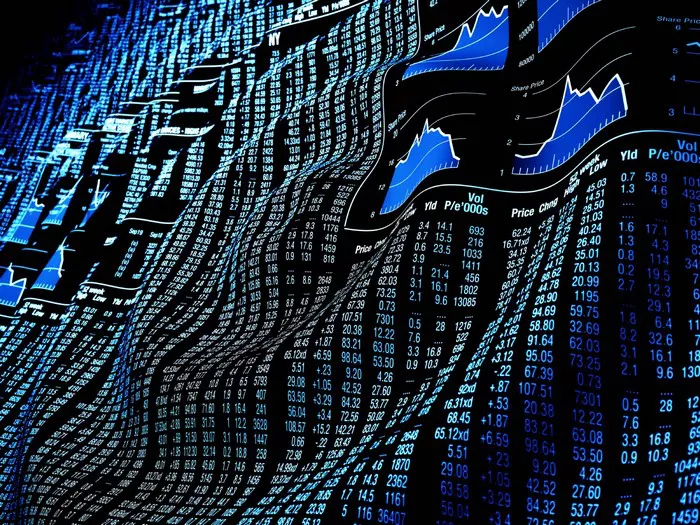The United States Dollar (USD) is one of the most widely used currencies in the world, and it has a long history of serving as the global standard for trade, investment, and reserves. The U.S. government has issued various denominations of currency throughout its history, each serving specific purposes in the economy. Among these bills, there has been a variety of denominations, some more common than others. One interesting question that many people ask is, “What is the highest USD bill?”
In this article, we will explore the history of U.S. currency bills, focusing on the highest denominations ever issued by the U.S. government. We will also discuss the role these bills played in the economy, why they are no longer in circulation, and their impact on monetary policy. We will conclude by looking at the current state of large denominations and the future of U.S. currency.
Introduction to U.S. Currency Denominations
The U.S. Dollar is issued by the Federal Reserve, the central banking system of the United States. Over the years, various denominations of currency have been introduced, from the small 1-dollar bills to the large denominations that were once in circulation.
The currency system in the U.S. was designed to facilitate trade and commerce, providing a reliable and efficient medium of exchange. Initially, the U.S. issued coins, but over time, paper bills became the dominant form of money. Paper currency was first issued in the 19th century, and since then, various denominations have been used, each serving a different economic function.
The Most Common U.S. Dollar Bills
Today, the most common U.S. currency bills are the $1, $5, $10, $20, $50, and $100 bills. These denominations are widely circulated and used in everyday transactions, both domestically and internationally. They are the backbone of the U.S. economy and form the bulk of the money supply in circulation.
However, as the economy grew, there was a need for larger denominations, especially for transactions involving large sums of money. This led to the introduction of higher-denomination bills, some of which are no longer in circulation.
The History of High-Denomination U.S. Bills
The U.S. government has issued several high-denomination bills throughout its history, including $500, $1,000, $5,000, $10,000, and even $100,000 bills. These bills were primarily used for large financial transactions, such as business deals, governmental payments, and interbank transfers.
The $500 Bill
The $500 bill was first issued in 1861 as part of the Civil War currency. It was initially used as a way for the government to pay large sums of money for military expenditures. The bill featured a portrait of William McKinley, the 25th President of the United States.
The $500 bill became widely used by businesses and banks for large transactions, especially before the rise of checks and electronic banking. However, due to its high denomination and limited use in everyday transactions, the $500 bill was eventually discontinued in 1969 by the U.S. Treasury Department as part of a move to combat organized crime and money laundering. Today, the $500 bill is a collector’s item and is highly sought after by numismatists.
The $1,000 Bill
The $1,000 bill was first issued in 1861 during the Civil War and was used for large payments and interbank transfers. It featured a portrait of Grover Cleveland, the 22nd and 24th President of the United States.
Like the $500 bill, the $1,000 bill was primarily used by businesses and financial institutions for large transactions. However, it was also discontinued in 1969 by the U.S. government as part of the effort to curb illegal activities such as money laundering. Despite its discontinuation, the $1,000 bill remains in limited circulation, with some bills still being held by collectors and financial institutions.
The $5,000 Bill
The $5,000 bill was first issued in 1861 and featured a portrait of James Madison, the fourth President of the United States. This high denomination was mainly used for large interbank transfers and business transactions.
The $5,000 bill was also discontinued in 1969, largely because of its limited use and the increasing use of checks and other forms of payment. Like the $500 and $1,000 bills, the $5,000 bill is now a collector’s item. There are very few of these bills in circulation today, and they can be sold at auction for large sums of money, depending on their condition.
The $10,000 Bill
The $10,000 bill was first issued in 1861 and featured a portrait of Salmon P. Chase, who served as the U.S. Treasury Secretary during the Civil War. The $10,000 bill was primarily used for large transactions between banks and for business purposes. It was never widely used by the general public, but it was an important part of the currency system for large transactions.
The $10,000 bill was discontinued in 1969 along with the $500, $1,000, and $5,000 bills. Its discontinuation was part of an effort by the U.S. government to modernize the currency system and reduce the use of cash for illicit activities. Today, the $10,000 bill is a rare and valuable collector’s item, and its value in auctions can reach significant amounts, depending on its condition.
The $100,000 Bill
The $100,000 bill was the highest denomination ever issued by the U.S. government. It was issued in 1934 and featured a portrait of Woodrow Wilson, the 28th President of the United States. However, the $100,000 bill was never released for public circulation. It was used exclusively for transactions between Federal Reserve Banks and was not intended for general use.
Because it was not used by the public, the $100,000 bill is considered a unique piece of U.S. currency history. It is primarily held by collectors, and only a few bills are believed to be in existence today. The bill was discontinued in 1969 along with the other high-denomination bills.
Why Were High-Denomination Bills Discontinued?
The discontinuation of high-denomination bills such as the $500, $1,000, $5,000, and $10,000 bills in 1969 was part of an effort by the U.S. government to modernize the currency system and reduce the use of cash in illegal activities. The high denominations were rarely used for legitimate transactions and were often seen as a tool for money laundering, tax evasion, and other illicit activities.
The growing use of electronic transactions, checks, and bank transfers made high-denomination paper bills obsolete. By eliminating large currency bills, the U.S. government hoped to streamline the monetary system and reduce the risk of large sums of cash being used for illegal purposes.
The Rise of Electronic Payments
As electronic payments and digital banking became more common, the need for large paper currency denominations decreased. Today, most large transactions are conducted through wire transfers, checks, or electronic payment methods rather than physical cash. The U.S. government has also encouraged the use of digital payment systems to further reduce the role of physical currency in the economy.
The Role of High-Denomination Bills in Modern Currency
Today, high-denomination bills like the $500, $1,000, $5,000, and $10,000 bills are no longer in circulation, and the largest bill currently issued by the U.S. government is the $100 bill. The $100 bill is the highest denomination in common circulation and is used for a wide range of everyday transactions. However, the absence of larger bills has not significantly impacted the functioning of the U.S. economy, as modern payment methods have replaced the need for large cash transactions.
While high-denomination bills are no longer used for everyday transactions, they still have a place in numismatics (the study of coins and currency) and among collectors. Old, rare bills from the pre-1969 era can fetch high prices at auction, particularly if they are in excellent condition. Some of the rarest high-denomination bills can sell for tens of thousands of dollars, making them valuable collector’s items.
The Future of U.S. Currency
Looking forward, it is unlikely that the U.S. government will reintroduce high-denomination bills into circulation. With the continued rise of digital payments, cryptocurrency, and other financial innovations, there is little need for large paper currency denominations. The future of U.S. currency will likely be dominated by digital forms of money, such as electronic funds transfers, credit cards, and cryptocurrencies like Bitcoin and Ethereum.
While the traditional paper currency will likely remain in circulation for the foreseeable future, it is clear that the role of physical cash in the economy is diminishing. As financial systems evolve, it is possible that even the $100 bill may eventually be replaced by more secure and efficient methods of conducting transactions.
Conclusion
In conclusion, the highest USD bill ever issued was the $100,000 bill, which was used exclusively for transactions between Federal Reserve Banks. While high-denomination bills like the $500, $1,000, $5,000, and $10,000 bills were once part of the U.S. currency system, they were discontinued in 1969 to reduce illegal activities and simplify the monetary system. Today, the $100 bill remains the highest denomination in circulation, and electronic payments have replaced the need for larger denominations.
Though high-denomination bills are no longer used in everyday transactions, they remain valuable collector’s items. The evolution of currency and the rise of digital payments will continue to shape the future of money, making physical cash less prominent in global economies. Nonetheless, the history of high-denomination bills remains an interesting chapter in the story of U.S. currency.
Related topics:

































